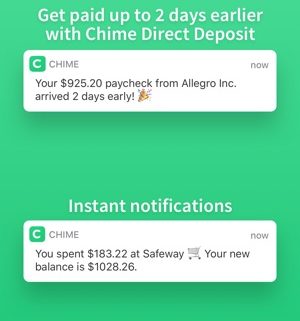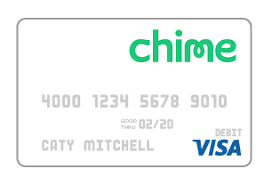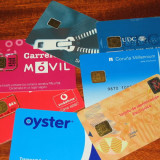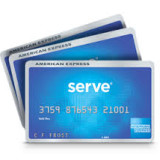Welcome to our site! Our editors have been covering the credit and debit card space for a total of 30+ years and we are proud to have been featured by the Wall Street Journal, CNN, etc. Your input is invaluable and we’d love to have your opinion as to whether the Green Dot prepaid debit card is a good deal (see below) – this site is powered by you!
Unlike almost all card comparison sites that only list cards that advertise with them, 85% of the cards on our site don’t pay us a dime.
How the Green Dot Reloadable Visa Debit Card Works
Just like many other prepaid debit cards, the standard Green Dot Prepaid Visa® Card (which is what this review will focus on) works like a bank debit card or ATM card. However, depending on what you load your Green Dot prepaid card to do, the working can vary a little. You can load the card to put money on other prepaid cards, debit cards or credit cards; and even to pay some specified bills.
Please Note! This page was originally published a few years ago and is no longer being updated in 2021. GreenDot is focusing on promoting their new and improved Go2Bank Cash Rebate Visa- Click Here for to More Info and to Apply Online in Just Mins! (sponsor link)
Now, depending on the service that you will be using your prepaid card to access, there are a number of benefits you may receive as compared to using bank cards. For instance, you can use the Green Dot card to get some discounts on online shopping. In some cases, you may also be rewarded with points for using the card.
However, please note that the card has a pretty high monthly maintenance fee of $7.95 if you do not do a monthly direct deposit of at least $1,000 (which is a high amount as well compared to other prepaid Visa cards). Also, there is a $1.95 fee to purchase the card (activation fee) and a cash reload fee of $5.95, which is high as well in comparison to other similar prepaid card offers (bad features).
Good Benefits of using the Green Dot Reloadable Visa Card
- You can track spending on the go using the Green Dot mobile app.
- You can apply for this prepaid debit card whether you have a bank account or not and you will not be subject to a credit check before you are provided with the card.
- You will be able to fill other prepaid cards, debit cards or even credit cards easily with the Green Dot MoneyPak. On the same note, you can use the card to pay bills, withdraw cash from ATMs and even shop online.
- You will have no long usage commitments. This means you can choose whether to use it or not.
- You will not be subject to any penalty charges and overdraft fees.
- Finally, the card is reloadable meaning that you can top up the money on the card using direct deposit, MoneyPak or even bank money transfer services.
Important Consumer Note!
The Greendot debit card does NOT help you improve your credit.
Registering for Green Dot Prepaid Debit Card
There are two ways to get a Green Dot reloadable Visa prepaid debit card. You can register online and setup your account or purchase a card at a retail location. Both options are simple. However, by registering online you can avoid the fee associated with purchasing a card in-store. You will be required to load the card before you can make purchases.
When registering, you may be required to submit some of your personal details including the provision of your social security number. After registration, you will be provided with a non-reloadable temporary prepaid card that you will use until you are provided with the reloadable prepaid card. It is important to note that the temporary card will not have access to some services like ATM usage, and it may be limited for use in the United States only.
As per the provision of Federal laws, Green Dot will have the responsibility of obtaining, verifying and recording relevant customer information that can be used to identify them (customers). Some of the basic information that Green Dot may require from you when registering for a Green Dot reloadable prepaid debit card include your name, date of birth, social security number and address.
Is the Green Dot Prepaid Visa Debit Card a Good Deal or Bad? (Summary)
Please Note! This page is no longer being updated in 2021. GreenDot is focusing on promoting their new and improved Go2Bank Cash Rebate Visa- Click Here for to More Info and to Apply Online in Just Mins! (sponsor link)
The Green Dot prepaid card may be a good deal for you, but be sure to review our other prepaid card offers which have less fees, such as the new no fee Chime Visa below, and different benefits. The monthly membership fees on Green Dot are high if you don’t have a direct deposit every month.
The bottom line is that it may or may not be the best reloadable card for you depending on how you use it. You should compare prepaid cards carefully to be sure you choose the prepaid card that’s most cost efficient for you.
Related New Visa Card to Compare to Green Dot (Works Like Greendot Debit but has No Fees):

Chime is a new Visa card that is amazingly free (unless you use the card outside of their large ATM network). This is best alternative to a prepaid card that we’ve seen in 5+ years and offers all of the benefits of traditional bank account.
People with poor credit can apply too as there is no credit check (No ChexSystems either). Chime can be managed entirely from your smartphone. No hidden fees. No overdraft fees. No minimum balance. No monthly service fees. No transfer fees. Over 38,000 fee-free ATMs, plus 30,000+ cash-back locations.
And for a limited time, earn a Cash referral bonus of $50 when you tell your friends and family members about Chime and they sign up (and they’ll earn $50 too)- details within the app after you apply! Click for more info.- you can apply online in just 2 mins with no obligation. Start by simply entering your email address and clicking “Get Started”– over 3 million customers couldn’t be wrong. 🙂 (Referral Link)
Please read our review of another Green Dot offer here:






